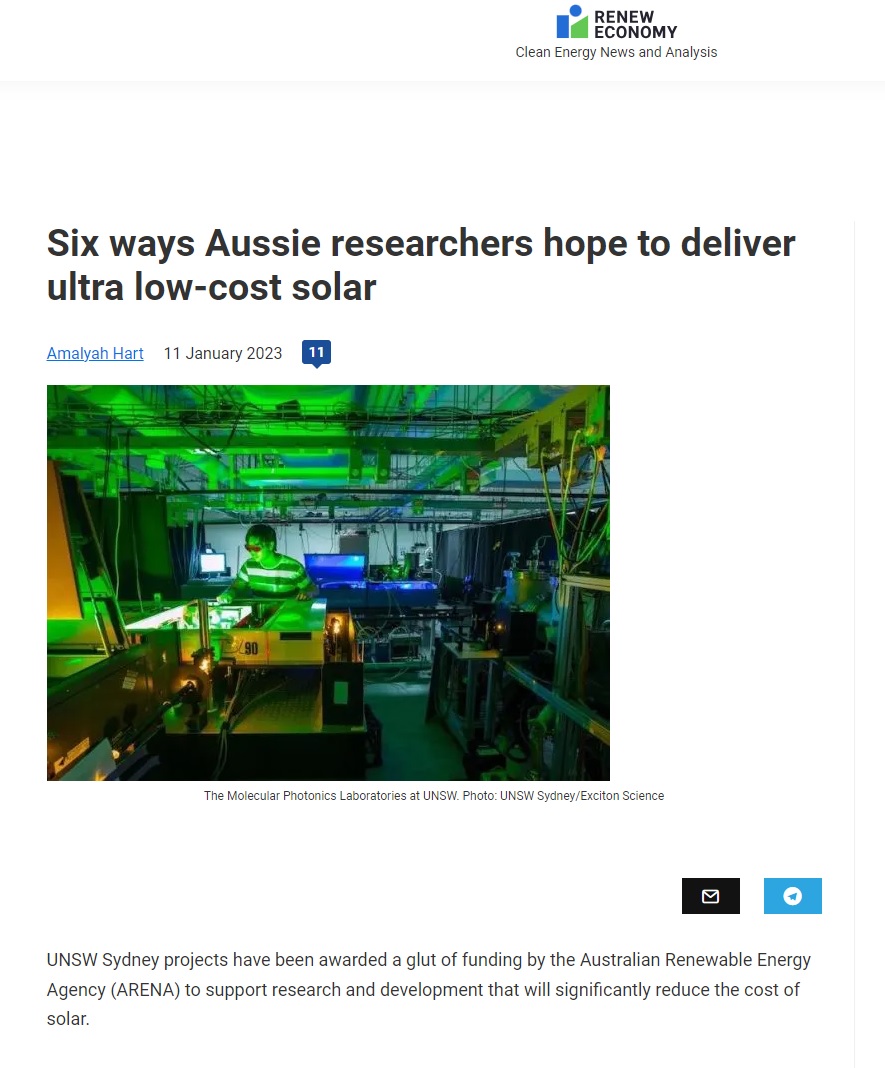Communications
In this section
In the news
In 2023, Exciton Science research was featured in various high-profile and specialist media publications, underscoring the Centre's continuing important contributions to scientific advancements.
The Centre's work on developing a wide range of inexpensive fluorescent dyes was highlighted by ETH and further explored by Tech Explorist, showcasing the potential impact of these dyes in multiple applications.
Efforts to deliver ultra-low-cost solar technology were discussed in depth by Renew Economy and Oil Price, emphasizing the Centre's role in advancing renewable energy solutions.
Significant strides in X-ray detection technology were reported by Phys Org and Lab Manager, highlighting the potential benefits for medical imaging and security.
The Centre's research into OLED technology for mapping magnetic fields was detailed by Nano Werk and AZO Optics, indicating future applications for consumer electronics.
Publications such as MSN and Energy Portal covered the development of self-healing solar panels, showcasing how this innovation could dramatically improve the longevity of solar cells in harsh environments like space.
Lastly, the Centre's integration of AI in the design of solar cells was featured by RMIT and Tech Explore, reflecting on how AI is transforming the field of renewable energy.
This media coverage demonstrates the ARC Centre of Excellence in Exciton Science's pivotal role in pioneering research and its applications in industry and beyond.




Digital and Social Media

Website
The Exciton Science website was visited by 26,992 users in 2023. Pageviews from these users numbered 95,747 for the calendar year, with an average of 2.45 pages viewed by user session and an average session duration of 2 minutes.
The proportion of website traffic generated by organic search (46.83%) increased in 2023, followed by direct traffic (24.27%) and social media referrals (22.72%).
Beyond the homepage, the most visited sections within the Exciton Science website included the ‘It’s on like Exciton’ arcade games, our internal Members Portal, individual news stories and our video tutorials pages.
Social Media
The Centre’s cumulative presence on X (formerly Twitter) produced 277,826 Tweet impressions, with an engagement rate of 3.47%. Cumulative video views on X increased by 132% from 2,893 to 6,740 year on year.
After dispensing with paid boosting of content, Exciton Science recorded an organic annual Facebook page reach of 489,547. The Centre also recorded a 7% year on year increase in Instagram likes, while continuing to attract new followers on both Meta platforms.
LinkedIn was a productive platform for Exciton Science, with 343 new followers added in 2023 to reach 1,529. Engagements (2,307), page clicks (3,433), reactions (2,163) and page impressions (102,069) demonstrated the strength of the Centre’s LinkedIn content, which resonated with new and existing audience members.
The strength and success of the Centre’s YouTube presence continued in 2023, with 37,191 users recording a total watch time of 2,600 hours and approximately 496,000 impressions. Subscribers increased by more than 600 to 1,890, with an impressions click through rate for the year of 3.90%.
Facebook – 489,547 page reach

Instagram – 7% year on year increase in likes

LinkedIn – 1,529 followers

X (formerly Twitter) – 277,826 Tweet impressions

Youtube – 1,890 subscribers

Government & Policy
Outreach